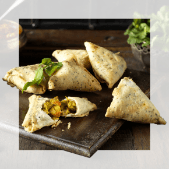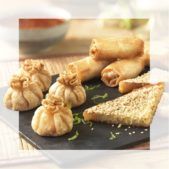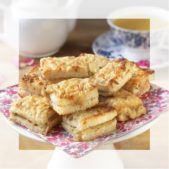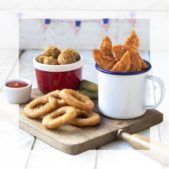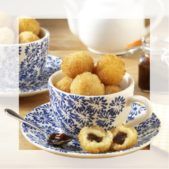Lindt, Hershey, Frys, Nestle, Cadbury all famous types of chocolate and they all have something else in common.
But first, as we celebrate International Chocolate Day, let us peel back the layers of time and explore the rich history of this food of the Gods.
It was said the Aztec deity Quetzalcoatl was cast out by the Gods for sharing chocolate with humans. The ancient civilization used to drink liquid made from cocoa beans. They clearly recognised its value as they also used cocoa beans as a form of currency – in 1500s Mexico, 100 cocoa beans would buy you a turkey!
Introduced to Europe by Columbus, chocolate remained in liquid form a further 300 years until Joseph Fry of Bristol discovered how to mould chocolate and in 1866 created the first mass-produced chocolate bar – Fry’s Chocolate Cream.
Nine years later Swiss chocolatier Daniel Peter combined dark chocolate with milk powder created by Henri Nestle. The Nestle Company eventually resulted and milk chocolate entered the world.
Confirming the Swiss appetite for chocolate innovation, Rodolphe Lindt perfected an industrial process known as conching in which cocoa butter is evenly mixed with raw chocolate. The frictional heat produced releases flavours creating a mild but rich, velvety taste. From this point solid chocolate overtook liquid as the preferred method of consumption.
Having witnessed the success of Joseph Fry, rival John Cadbury in Birmingham realised the future for chocolate lay away from drink and began perfecting his own moulded chocolate and initiating a series of step changes as chocolate became affordable for the masses.
Cadbury produced boxes of chocolate, originally for Valentines Day and then the everyday celebration box – Milk Tray. He invented the chocolate egg for Easter, merged with Fry’s and then throughout the twenties created iconic chocolate bars that have stood the test of time – including Flake, Crème egg, fruit and nut and crunchie.
Over in America Milton S Hershey had seen the potential of the chocolate bar and his products would eventually sell in 60 countries across the globe and the area of Pennsylvania in which he first set-up would be re-named Hershey. International Chocolate Day is held on his birthday, September 13
The health benefits of chocolate may be questionable, but the rapid expansion of the business saved Hershey’s life. He had been booked on the ill-fated maiden voyage of the Titantic but cancelled at late notice when urgent business matters cropped up.
So there you have it. All famous chocolate bars named after their inventors. But surely that’s not the case for possibly the most famous chocolate bar ever? the one that helps you work rest and play? Surely, Mars Bar is out of this world, its name a tribute to the mysteries of the red planet or the power of the Roman God of War?
In fact, it was also named after its creator – Forrest Mars – who established his Mars factory in Slough and would later link with fellow chocolatier Bruce Murrie, combining their surnames for the product the world knows as M&M’s.
There is, however, one fascinating fact that does link Mars with outer space. In 1989, a Mars food scientist working on the breakthrough that would eventually lead to ice cream Mars Bars heard a job advert on the radio and decided to apply.
Her name was Helen Sharman. She got the job and two years later blasted into space to become Britain’s first astronaut.
Beef and Guinness Pie with Chocolate
Ingredients:
- 2lb braising steak cut into chunks
- 1/4 cup all-purpose flour,
- salt
- black pepper
- 2 tbsp olive oil
- 6 shallots, chopped
- 2 large carrots, diced
- 2 cloves garlic, crushed
- 1 stick of celery, finely chopped
- 2 sprigs of fresh thyme
- 2 cups of Guinness Draught or another brand of stout
- 1-2 cups of beef stock
- 1 1/2 tablespoons unsalted butter
- 2 tbsp finely chopped dark chocolate
- Puff pastry
- 1 large egg, beaten
Method:
- Put the beef in a bowl with the flour, salt and black pepper. In a large pan, heat 1 tablespoon of the oil and brown the beef on all sides. Remove.
- Add the shallots, carrots, garlic and celery. Cook, stirring occasionally, until soft then add the thyme. Return the beef to the pot. Add the Guinness and beef stock so the entire mixture is completely covered. Bring to a boil, reduce the heat and simmer, stirring occasionally, until beef is tender, up to 2 hours.
- Strain the cooking liquid into a large glass measuring cup. You should have enough for 3 cups. Return the beef and vegetables to the pot, discarding the thyme.
- In a saucepan melt the butter. Stir in the remaining 2 tablespoons flour to form a smooth paste. Whisk in 1/2 cup cooking liquid over medium heat. Gradually whisk in the rest of the strained cooking liquid and simmer until slightly thickened, about 4 to 5 minutes. Add the chocolate and stir to melt. Pour the sauce over the beef and vegetables and set aside to cool.
- Heat the oven to 350 degrees. On a lightly floured work surface, roll out one sheet of the thawed puff pastry into about a 14-inch square. Cut to two circles large enough to fit in the bottom and up the sides of the pie tin or ramekin, about 8 inches. Cut out two circles that will fit the top. Repeat with the remaining puff pastry sheet. Evenly spoon the beef mixture into the pastry-lined pie tins or ramekins using about 1 1/4 cups each. Top with the 6-inch circle and pinch the edges together to seal.
- Cut 2 diagonal slits in the top center. Brush the pastry with the egg. Place the pies directly on the lower oven rack. Bake until the pastry is puffed and golden brown, 45 minutes. Remove from oven. Let rest a few minutes. Serve directly in the pie tin or invert onto a plate.
About Sean Flint
Development & Innovation Chef of SK Foods.
Your food. Our Passion.
